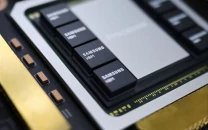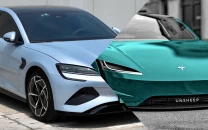NASA unveils prototype for LISA telescopes to detect gravitational waves
This innovative technology aims to enhance measurements of ripples in space-time.
1729669046-0/Untitled-design-(16)1729669046-0-640x480.webp)
NASA has unveiled the first look at a full-scale prototype for six telescopes designed to enable the space-based detection of gravitational waves over the next decade.
The mission, known as the Laser Interferometer Space Antenna (LISA), is a collaboration with the European Space Agency (ESA).
Gravitational waves are ripples in space-time caused by events such as merging black holes.
LISA aims to detect these waves by using lasers to measure precise distances—down to picometers, or trillionths of a metre—between three spacecraft arranged in a triangular formation.
Each side of this vast configuration will span nearly 1.6 million miles, or 2.5 million kilometres.
"Twin telescopes aboard each spacecraft will both transmit and receive infrared laser beams to track their companions," said Ryan DeRosa, a researcher at NASA's Goddard Space Flight Center.
"NASA is supplying all six of them to the LISA mission."
The prototype, named the Engineering Development Unit Telescope, will serve as a guide in developing the flight hardware.
The prototype underwent post-delivery inspection in a darkened clean room at NASA Goddard in May. It is crafted from an amber-coloured glass-ceramic that maintains its shape across a wide temperature range, and its mirror surface is coated in gold.
This design enhances the reflection of infrared lasers and reduces heat loss in the cold of space, allowing the telescope to operate optimally near room temperature.
Manufactured by L3Harris Technologies in Rochester, New York, the Engineering Development Unit Telescope highlights advancements in materials technology.
The primary mirror is made from Zerodur, an amber-coloured glass-ceramic known for its stability and precision.
The LISA mission is anticipated to launch in the mid-2030s, paving the way for groundbreaking discoveries in astrophysics.



















COMMENTS
Comments are moderated and generally will be posted if they are on-topic and not abusive.
For more information, please see our Comments FAQ